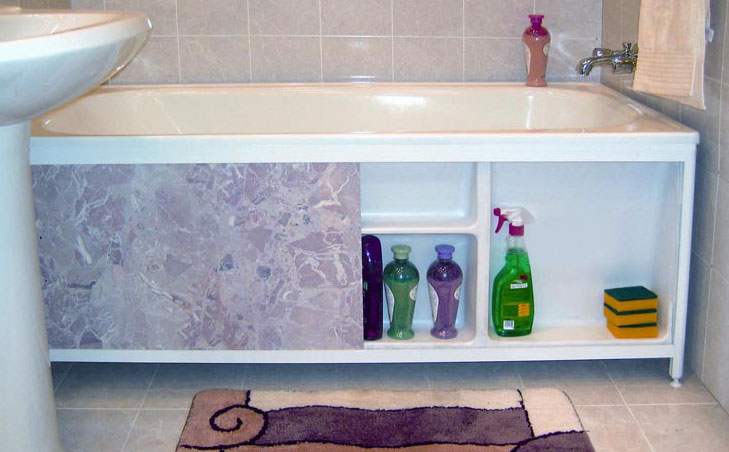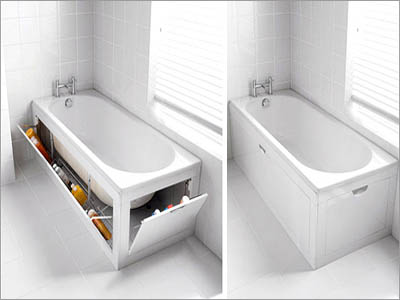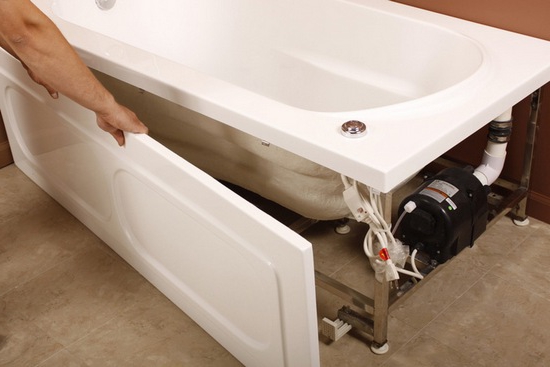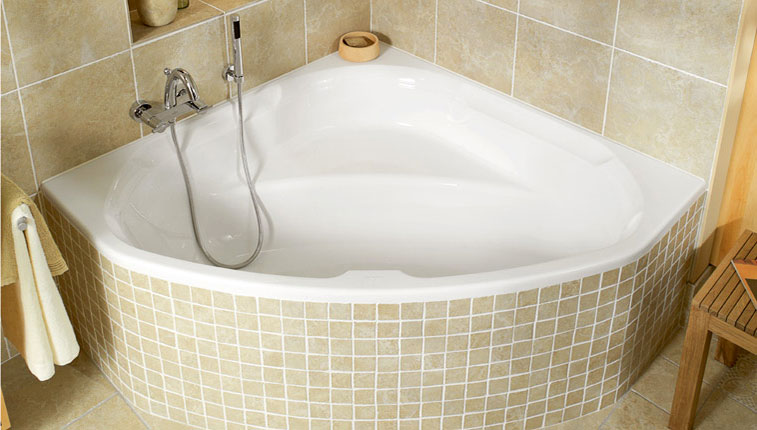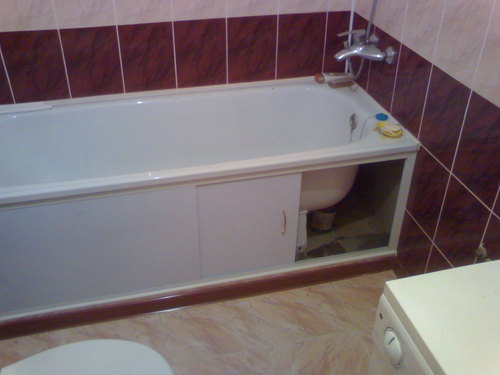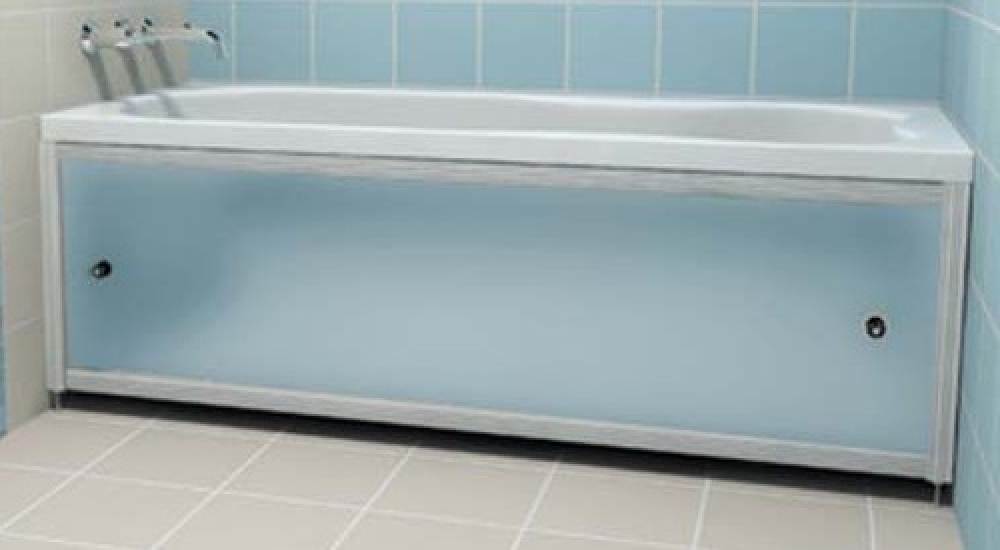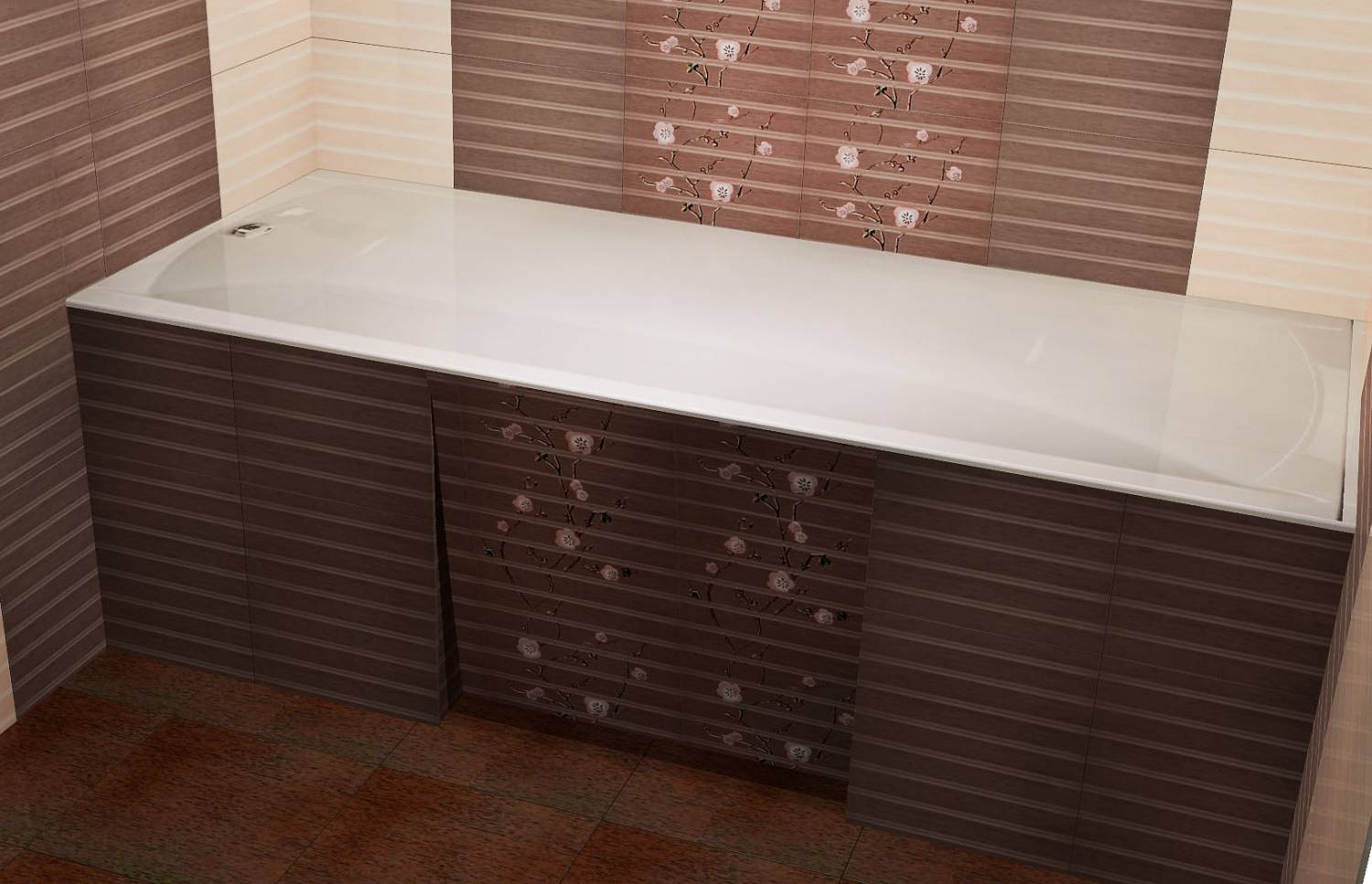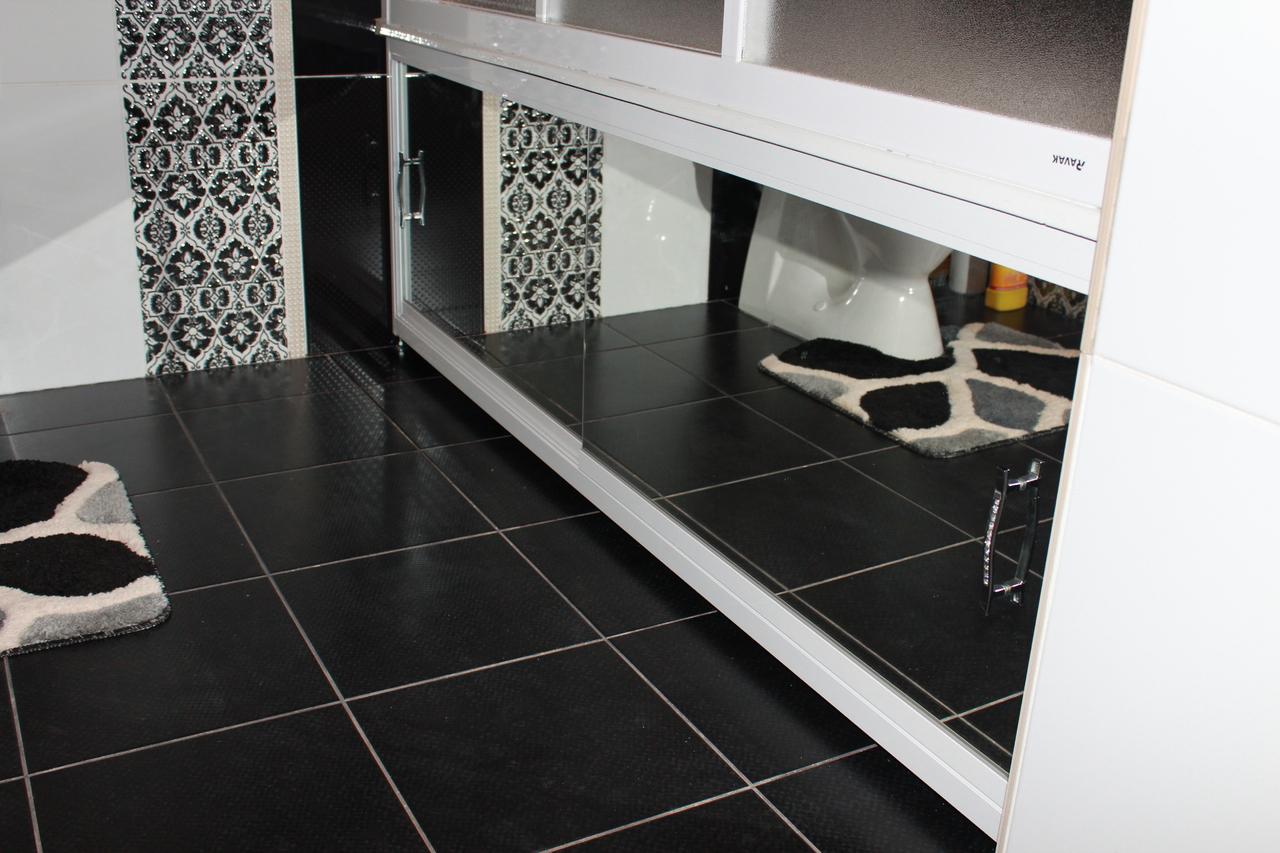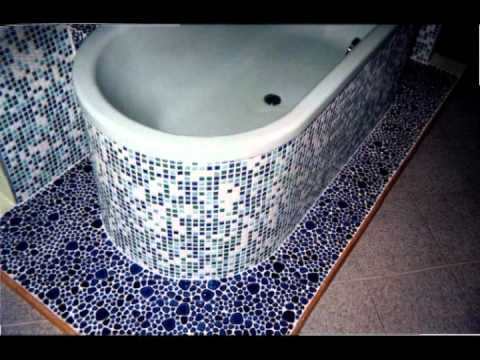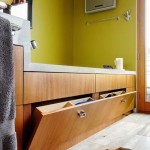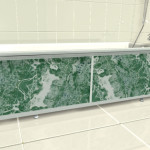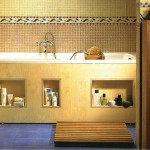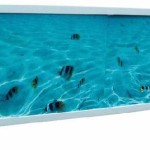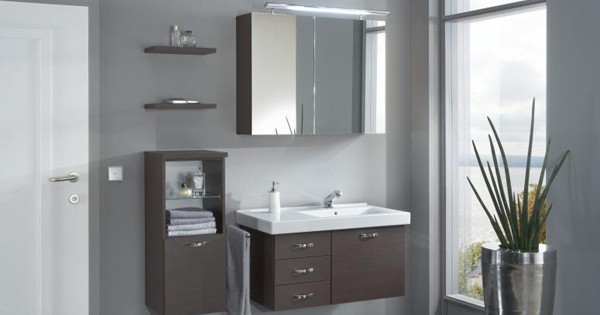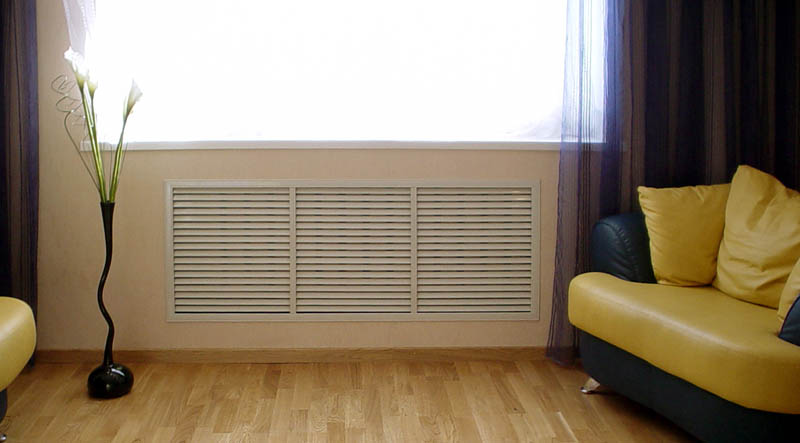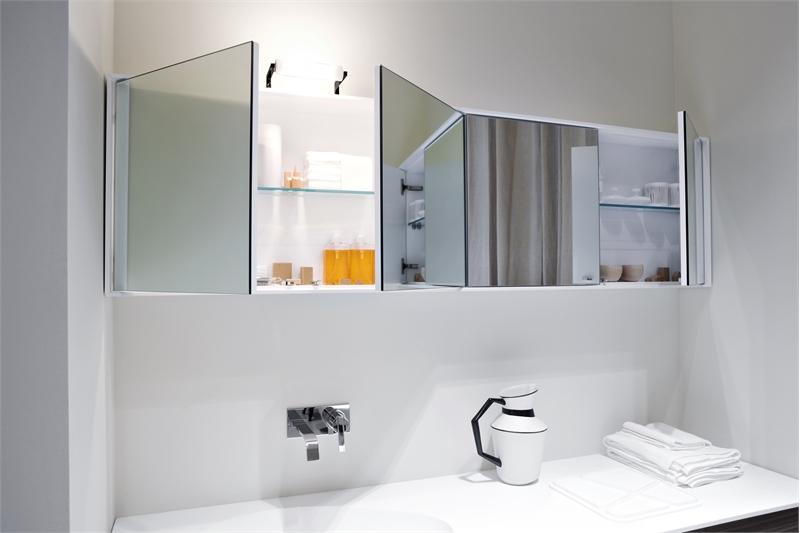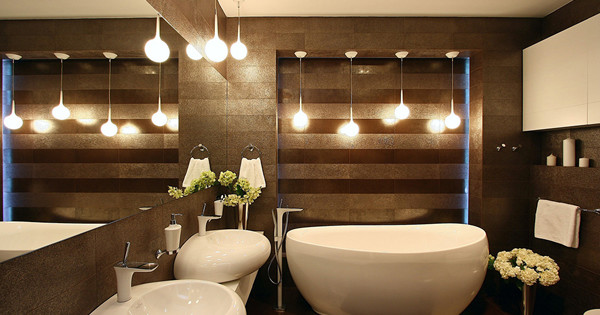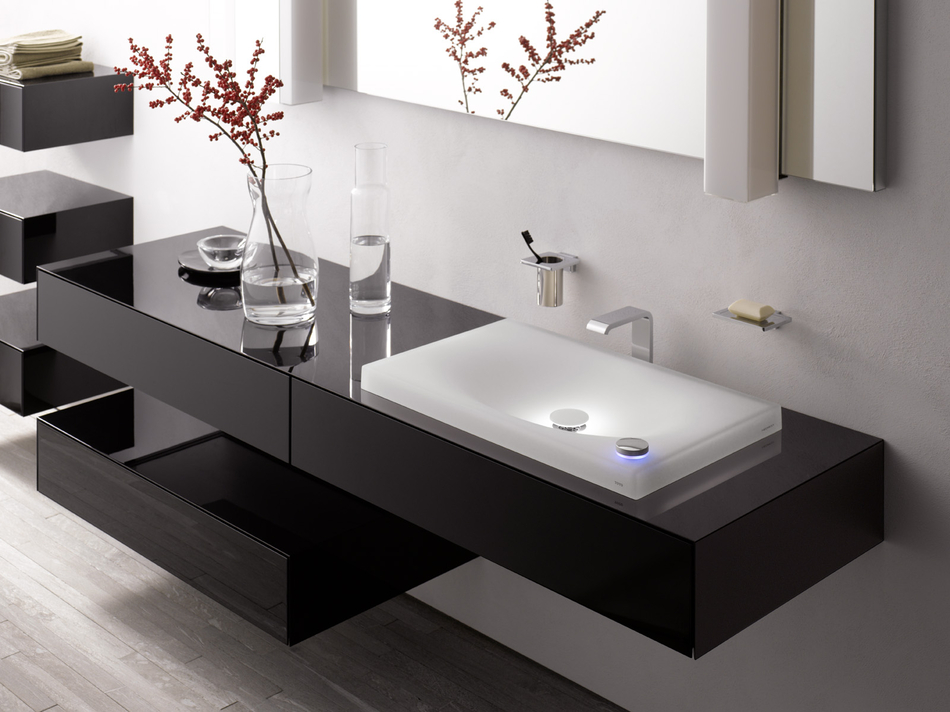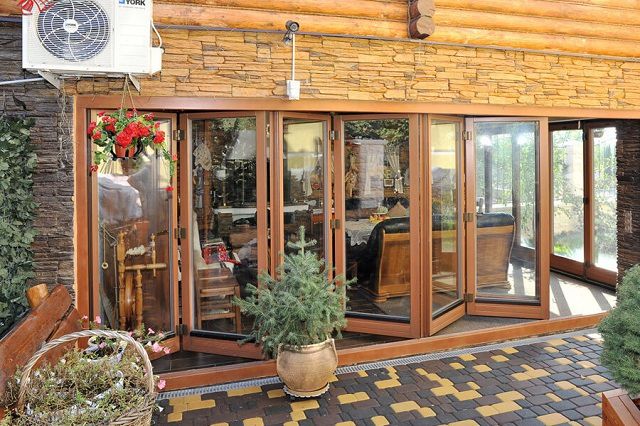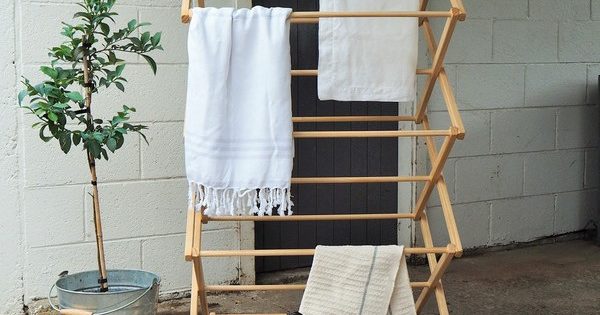8 tips for choosing a bath screen
To bathroom was the most aesthetic, it is necessary to mask all communications. In this regard, screens under a bathwhich should be not only aesthetic, but also functional. Depending on your own preferences, you can choose a stationary or sliding design. The latter may also become an additional storage location. The screen can be made of different materials, have any design and even be mirrored. What to consider when choosing a screen for a bathtub so that it meets all the requirements and is as functional as possible in a particular bathroom? We have put together some useful tips that will definitely help you in choosing.
No. 1. What types of screens exist?
Depending on the design All bath screens are divided into three types:
- sliding and swinging. This is one of the most practical and convenient options, because it allows you to not only hide communications, but also use the space under the bathroom for good, storing household chemical goods or other things there;
- removable non-sliding screens usually set under acrylic bathtubs. They allow you to access communications relatively quickly if you need to repair something, but the not-so-simple screen-capture system does not allow you to store things that you need permanently;
- stationary screens They look aesthetically pleasing, because the space of the bathroom is perceived as harmonious and monolithic, but this place can not be used for storage of things, which may seem irrational.
No. 2. Sliding screens: pros, cons and features
Sliding screens are the most profitable designs that allow you to leave the space under the bathroom accessible, and in which case repairs can be carried out immediately. At the same time, numerous shelves will be an excellent place to store the necessary things: household chemicals, the remains of building materials after repair, etc. Such designs are easy to install and clean, they offer a huge selection of different colors, but they are a little flimsy, and experience suggests that they will often need to be repaired.
The very design of such a screen consists of guides and panelsthat move along them. The quality of the screen depends on the material of the performance of these elements. Guides can be as follows:
- plastic. This is the cheapest and, moreover, quite durable material, which is characterized by absolute resistance to moisture. In addition, the color of the plastic does not change during operation, because it is not washed off and does not climb. But plastic will not withstand mechanical damage: a more or less severe blow to it can lead to a full resolution of the structure;
- aluminum frames They are much stronger than plastic ones, they can hold a blow, they are highly moisture resistant, and they can be painted in any color. The only drawback of such a material is that the type of metal may not fit into the interior a bathtub;
- from ordinary frames is very different roller gearwhich resembles, rather, the principle of operation wardrobe. In this case, the guides are completely hidden, and only the door facades are visible to a person, and they slide along the guides very smoothly and silently. True, such a solution costs more, and you have to make the entire system to order, because there are no ready-made solutions.
Doors can be made of material that will be resistant to high humidity and constant temperature changes, will not change color and shape, will be stable and reliable. Features of materials that can be used for these purposes, consider below.
No. 3. Who should use the swing screens for the bath?
Swing screens can be called one of the varieties of sliding systems. They are distinguished only by the features of opening doors. Swing screens can used in bathrooms with ample spaceso that the door can open freely and at the same time does not take up half the free area of the room.
A similar solution has a lot of advantages. So, if you design such a screen in one style with all lockers and bedside tables, the bathtub will resemble one of the elements of the headset, which, of course, will decorate the interior and make it more harmonious.
Number 4. Removable non-sliding screens: pros and cons
Similar screens are common as an element of modern acrylic bathtubs. Its main advantage is that it can have almost any shape, so with it you can close the space under the bathroom of any configuration. Such screens have a good appearance, and with it the bathtub is perceived as something one.
Removable screen target - hide all communications away from our eyes, but at the same time leave convenient and easy access to them, which is a mandatory security requirement. Installation of such screens is not as simple as, for example, sliding ones, and it is not so easy to remove them, so the space under the bathroom cannot be used for storage. Although it is possible, in principle, to put items there that may be needed once every two years.
No. 5. Stationary screen - an immortal classic
Such screens, as a rule, are made individually. They are considered the most aesthetic, as they allow best fit the bath in the interior space, facing the same tile or mosaic, like the walls of the room. However, such screens provide you with access to communications to detect possible problems: a small door can swing open, slide apart, swing back or be removed like a manhole cover, but nothing can be stored behind this door.
This type of screen can be called the most durable, and in terms of cleaning it is as simple as possible. But, at the same time, one should point to some disadvantages of such screens. So, a small window may not be enough for full access to communications, and then you have to disassemble the screen. The same will have to be done in the event of a bath replacement. The floor under the bathroom behind the screen is unlikely to be able to be thoroughly washed, since these places are hard to reach. In terms of installation, such screens are also not simple: first, the frame is mounted and sheathed plasterboard, or brickwork is createdand then - the tiles are laid. When creating such a screen at home, do not forget to leave a small gap at the very bottom, on the floor, so that it is convenient to come close to the bathtub.
No. 6. Alternative to bath screens
You can close all communications under the bathroom in another way - hang curtains. This is the easiest and cheapest option in terms of implementation. It’s enough just to install a pipe under the rim or even pull a fishing line, attach it to it curtains suitable size and color, and the screen is ready. All the advantages of such a screen are limited by simplicity and cost-effectiveness, as it is short-lived, not very convenient and often does not look very presentable.Although you need to make a reservation that there are types of interiors where exactly such a screen will look as harmonious as possible: for example, country and provence.
Number 7. Screen material
As mentioned above, the screen can be made of any material that can withstand all the conditions of the bathroom, and will not lose its appearance. Today's range offers a choice of the following options:
- plastic pvc screen not subject to moisture, does not lose shape and color even with constant exposure to high humidity. In addition, such screens are distinguished by a wide range of different colors and patterns, so choosing a suitable shade or even a picture for the interior of a particular bathroom will not be difficult. Moreover, through photo printing, you can create a screen with any image or photo. If plastic is used in a sliding structure, then the doors come out of it as light as possible and in order to move them from their place, it will not be necessary to exert any effort. But, like the plastic frame, the plastic screen is quite fragile, so it can be damaged by a kick. Yes, and the plastic screen does not look very expensive, fully consistent with the price;

- Chipboard screens used very rarely, because the material is not very resistant to moisture. To protect it, it is covered with films, which at the same time perform a decorative function, betraying the material with the structure of wood, stone, leather, etc. But such a film is not able to completely protect the material from the negative effects of moisture. Prolonged direct contact with water can damage such a screen. Particleboard doors are quite heavy, so it will be a little difficult to move, they are more suitable for a swing system;

- MDF - a material that incorporates all the positive properties of wood, but at the same time it is more resistant to moisture. The first thing that attracts attention is the huge range of different appearance options, so the screen can be stylized to any material and even make it exactly the same as the rest of the bathroom furniture;

- plexiglass - a material that is very resistant to moisture, it does not absorb it at all, has almost all the properties of plastic, but it looks more representative, and has a huge number of different textures and colors. In addition, doors made of such a material can even be mirrored. But plexiglass also has a drawback - fragility;

- glass can be used to make doors of swing or sliding screens. This is a fairly stylish solution, but only strong toughened glass will need to be used.
All of the above materials are usually used to create sliding screens for the bath. But if you plan to organize a stationary screen, then you can pay attention to such materials:
- brickwork - The most durable and reliable screen for a bath, however, its installation will require time and effort. On top of the brickwork, as a rule, is faced with some kind of finishing materials: most often, it tile, and exactly the same as used in wall decoration or gender premises. Some interior styles, for example, a loft allows you to leave the brickwork unfinished;

- mirror can be attached to brickwork, and in the end you get an exclusive screen, which, in addition, will significantly expand the space - a great option for small rooms. It is important that the reflection in such a screen is aesthetic: rags, buckets and the like are not the best decoration of the room, so you need to look around in advance and analyze what can ultimately be reflected in the screen;

- mosaic also mounted on top of masonry. The option has all the advantages of tiling, only in this case you can create a nice screen even on structures with irregular curvilinear shapes.

Number 8. Screen size
Everything is simple here.The screen should match the size of the bath. If you are looking at a finished screen, then mainly products with a width of 150, 160, 170 and 180 cm are on sale. The height of the structure is 50 or 60 cm. In principle, you can custom-make the screen with any design parameters, and it is easier to lay it out yourself if the bathtub differs in non-standard parameters and shapes.
In conclusion
If the screen for the bath allows you to use the space to good use, then organize a system of drawer shelves there so that you can store as many things as possible, and to find the necessary item as simply as possible. When choosing a particular design, proceed, first of all, from the interior of the bathroom and its dimensions, from the need to organize an additional storage space, from the requirements for structural strength, etc. We hope that our tips have helped you deal with the issue of choosing a screen for the bathroom.


